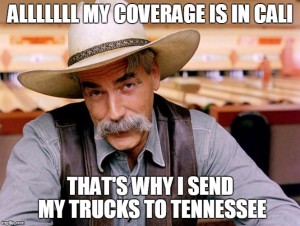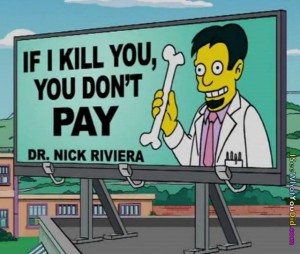Non-Disclosure Agreements for WC C&Rs?
Hello dear readers and happy Halloween!
Your humble blogger wishes you a very happy Monday morning. By chance, did I cross paths with any of you wonderful folks on Friday, at the California Self-Insured Association conference in Walnut Creek? If you haven’t attended one of these yet, I highly recommend them. It is an informative conference and the presenters are excellent.
Anywho, at one point, one of the presenters was discussing the theoretical approach of settling cases by way of Compromise and Release even when the coverage/employment relationship continued. In her experience, a C&R released reserves, reduced administration costs, and the feared consequence of the injured worker filing for another right to medical treatment or another 104 weeks of TTD was minimal.
One of the event attendees asked about what efforts are made to keep the injured and still-employed employees from bragging to co-workers and encouraging additional claims? After all, in our deepest and darkest fears, we all imagine this conversation:
Worker 1: “Jim, is that your new Tesla out back? How the heck can you afford a $100,000 car on our wages?”
Worker 2: “Easy, Marty – remember when I hurt my back helping my sister move last year? I just told the boss it happened at work, got a big fat settlement check, and now I’ve got my Tesla!”
Worker 1: “If it’s that easy, I bet I can do it too! I’m going to buy a llama farm with my settlement check!”
And then we wake up in a cold sweat and our loved ones remind us that everything is okay and it was only a dream…
Talk about a workers’ compensation spooky story!
Anywho, I got to thinking: can you enforce some sort of confidentiality agreement in a C&R? I have seen such language inserted into the compromise and release, noting that confidentiality is a “material provision of this settlement” and that “breach of this material provision shall entitle defendant-employer to damages and the resignation of the injured worker.” I’ve also seen separate agreements that are signed by the parties and not presented to the WCJ as part of the agreement.
How enforceable is this? Do you think if the injured worker blabs to his co-workers about how much money he got, the WCJ would order a resignation? Or perhaps disgorgement of the settlement proceeds? What if a separate line item was specifically inserted into the C&R “of the $85,000 C&R, $10,000 is specifically allocated as part of the confidentiality clause, the sum of which will be disgorged for breach of this agreement…”
How would you even prove disclosure, absent a willingness on the part of the co-worker to testify?
Your humble blogger asked around, but the defense attorneys I consulted seemed to consider preparing separate non-disclosure or confidentiality agreements as a tool for the employer. Perhaps a breach could result in some sort of disgorgement or termination in the civil arena.
What is your experience, dear readers? If you C&R with a still-active employee, how do you keep him or her from telling tall tales and encouraging more claims, baseless or otherwise? Are you prepared to litigate the resulting 132a claims for terminating an employee for discussing litigation in the workplace? What if it was discussed over coffee before or after work started?
This is a legitimate question that needs to be properly addressed: the employer doesn’t want to be a piñata, but at the same time, there’s benefit to be gained from a C&R with a still-active employee. It just might not be worth it if the injured worker is free to paint the employer as an easy mark for fraudsters.
Your humble blogger very much appreciates his readers for reading, but would also very much appreciate input. What do you think, dear readers?
Folks on another note – please remember that some trick-or-treaters and their parents decide that very dark costumes are a good idea for going out at night. Drive carefully!



